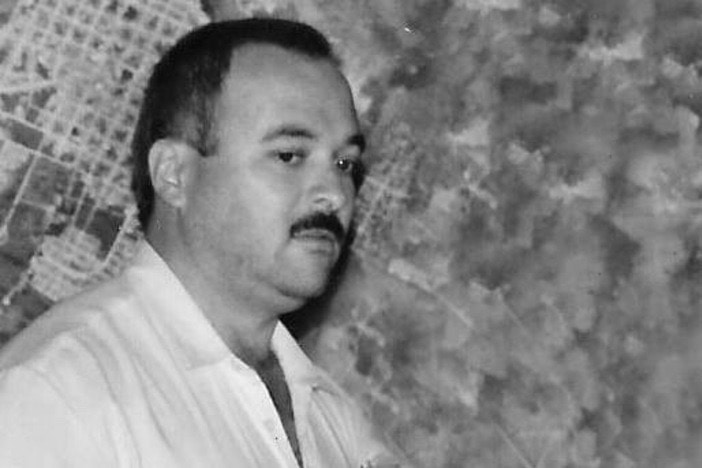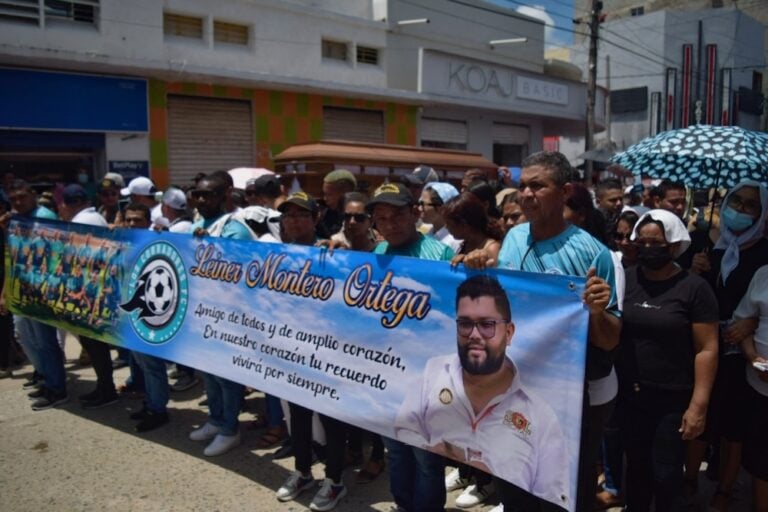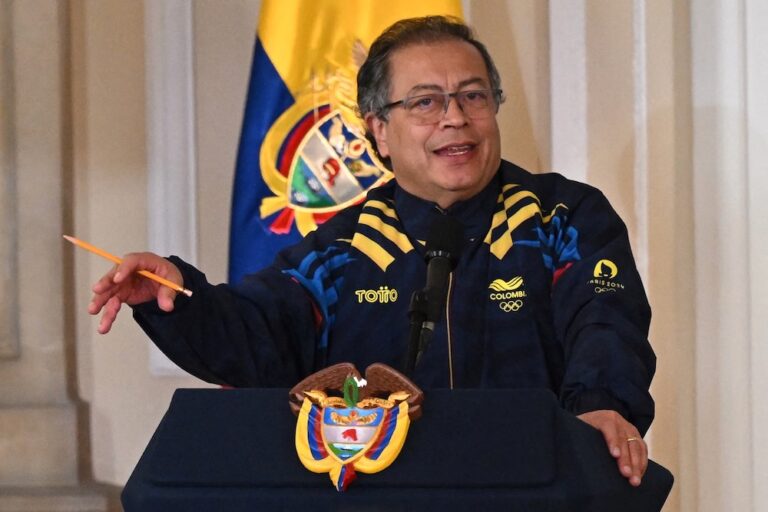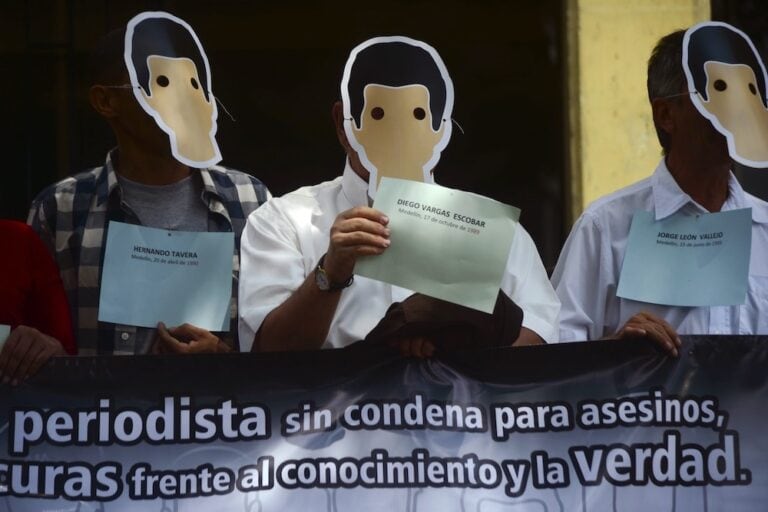Colombian radio journalist Nelson Carvajal Carvajal exposed local corruption; he was murdered in 1998 and his killers enjoy impunity. On 22 and 23 August 2017, the Inter-American Court of Human Rights heard Carvajal’s case in Costa Rica, which IAPA had called "a milestone in the fight against impunity"
Justice has to be done. It’s not a question of harassing anybody; we, the family, and the IAPA have a right to know the truth.
On the evening of 16 April 1998, the name of Nelson Carvajal Carvajal was added to the long list of Colombian journalists who have been murdered for their work and whose killers remain unpunished. He was shot seven times by an unknown assailant as he was leaving Los Pinos, the local school in Pitalito, Huila Province, where he also worked as a teacher.
Carvajal, 37 at the time, had been a journalist since 1986. He was editor of the news channel Noticiero Momento Regional and of the radio magazines Mirador de la Semana and Amanecer en el Campo. He also presented a show on Radio Sur of RCN Radio in the municipality of Pitalito.
Carvajal was known for his work exposing local corruption (including the misuse of public funds and money-laundering connected to drug-trafficking). This kind of journalism would be a risky endeavour anywhere, but it was especially so in Colombia, where over 40 journalists have been killed since 1992.
Today, because the investigation into Carvajal’s death and the subsequent prosecution of three suspects were so flawed, his family still don’t know the truth of what happened.
Shortly before his death – and in his last radio appearance – Carvajal had made a series of explosive allegations of corruption against a local construction company. After this, he had been visited at his school by a group of unknown men; what they spoke about is unknown, but according to witnesses, Carvajal was visibly shaken afterwards.
Three men (including the property developer whose business Carvajal had charged with corruption) were charged and prosecuted, but were eventually acquitted in December 2000.
The whole process had been plagued with irregularities. The case had passed through the hands of four prosecutors, some of whom had refused to interview witnesses who had come forward. Even more worryingly, the identities of more than 20 other witnesses (who had given testimony in secret) were revealed, leaving them vulnerable to intimidation.
An IFEX member, the Inter-American Press Association (IAPA), carried out its own investigation into the circumstances surrounding Carvajal’s murder. In 2002, it submitted a report to the Inter-American Commission of Human Rights (IACHR). IAPA argued that multiple violations of the American Convention on Human Rights had taken place both in the murder and subsequent official investigation into Carvajal’s death: these included violations of the right to life, the right to justice and the right to freedom of expression.
But in countries with high rates of corruption, justice moves slowly and victims’ relatives are often left without adequate protection against criminals. This was certainly the case with Carvajal’s family.
In October 2005, the Colombian daily El Tiempo published an article which said that IAPA had met with members of the Colombian government in order to explore ways of securing justice for Carvajal. This triggered a systematic campaign of intimidation directed at Carvajal’s family.
On the evening of 25 October 2005, an unknown man riding a motorbike followed Gloria Carvajal (one of the journalist’s sisters) to her doorstep, showed her a copy of the El Tiempo article and warned: “Continue this screwing around and you’ll see how it ends!” In December, Carvajal’s widow, Estela Bolaños, reported that their twelve-year-old twin daughters had been harassed by unidentified men. In April 2006, Estela received a message which contained images of a skull, headstones (bearing the names of her daughters) and the words: “Continue investigating and you’ll end up like this.” In July 2006, Estela received another death threat by telephone. The following month, Gloria Carvajal, Estela and her daughters fled Colombia.
From 2005-2009, IAPA continued to pursue a resolution of the case through negotiations with the Colombian government and the IACHR. However, these talks came to nothing so IAPA called on the IACHR to send the case to the Inter-American Court of Human Rights for consideration.
The IACHR referred the case to the Inter American Court of Human Rights in 2015. The IACHR’s own report on the case was damning. It said that there was sufficient evidence to conclude that Carvajal had been murdered “in order to silence his journalistic work revealing illegal activities which were carried out under the protection of the local authorities,” that there were “indications that state employees were involved in these illegal activities…which were not investigated with the necessary diligence,” that the state had failed to provide “adequate protection measures in the face of the threats received by family members and witnesses,” and that this had “discouraged the family from participating in the judicial process and obstructed the prosecution of the case.”
The IACHR found Colombia responsible for violating the American Convention on Human Rights to the detriment of Carvajal and his family and recommended that the case be re-opened.
On 22 and 23 August 2017, the Inter-American Court of Human Rights heard Carvajal’s case in Costa Rica. The IAPA and the Robert F. Kennedy Human Rights organisation represented Carvajal’s case. IAPA called this “a milestone in the fight against impunity”.



